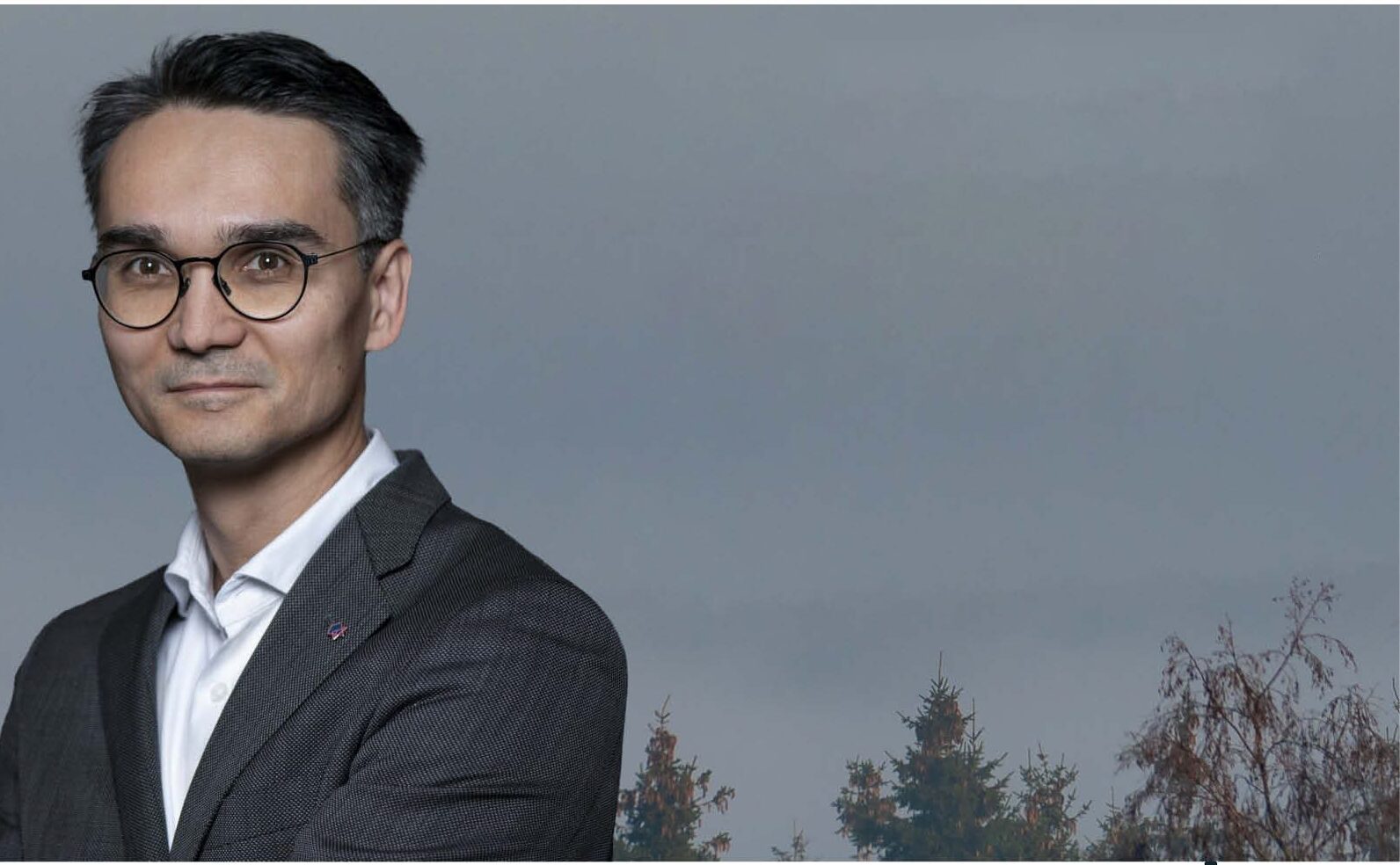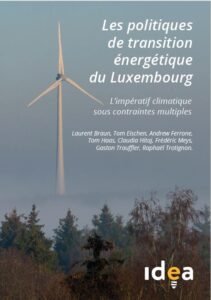The Energy Transition Imperative
The European Union and its Member States, including Luxembourg, have committed to ambitious climate targets to achieve net-zero emissions by 2050. This objective aligns with the Paris Agreement and the European Green Deal, requiring substantial shifts across all sectors, particularly in the energy and industrial sectors. Luxembourg faces unique challenges in meeting these goals due to its reliance on energy imports and a relatively high concentration of energy-intensive industries on its small territory. Achieving these targets requires significant reductions in greenhouse gas emissions across those sectors, necessitating industries to transition from traditional energy sources to greener alternatives while maintaining global competitiveness.
For Luxembourg, the energy transition must also be a strategic opportunity to bolster industrial competitiveness. Given the pressures of high energy costs and carbon pricing, making the country’s industries more efficient and resilient is essential to preserve economic vitality and support job creation. However, this shift must be balanced carefully to avoid jeopardizing industrial stability in the pursuit of climate goals. A gradual, well-supported approach is crucial, allowing companies to innovate and adopt green technologies at a pace that safeguards their financial viability. By focusing on both decarbonization and competitiveness, Luxembourg can ensure a sustainable future that retains its industrial base while meeting climate commitments.
Industries, especially energy-intensive ones, are central to Luxembourg’s economy, contributing significantly to employment, export revenue, and technological innovation. In 2020, Luxembourg’s industrial sector employed approximately 12% of the total workforce and contributed around 7% to the country’s GDP, highlighting its role in economic stability and job creation. The steel industry, a key player, accounted for approximately 15% of Luxembourg’s total export value, underscoring its importance to national revenue streams and international trade[1].
Sectors such as steel, aluminum, chemicals, glass manufacturing, and cement production sustain jobs and support the broader EU industrial supply chain with indispensable building materials essential for the energy transition. These industries are integral to providing critical materials like steel and aluminum for renewable energy infrastructure, such as wind turbines and electric vehicles, which are foundational to the EU’s energy transition goals. Additionally, Luxembourg’s industrial focus on circular economy initiatives enhances resource efficiency and supports the EU’s sustainability targets, further solidifying the country’s position in the European industrial landscape.
However, these industries are heavily dependent on energy and are among the largest emitters of carbon dioxide. The challenge of transitioning these sectors toward low-carbon production is daunting yet essential if Luxembourg is to meet climate goals. Given the size and influence of these industries, their successful adaptation to the energy transition could make a considerable impact, both domestically and across Europe.
The global competitiveness of Luxembourg’s industries hinges on stable, affordable energy. With the energy transition underway, these sectors face rising operational costs due to higher energy prices and emissions-related expenses. Competing against markets with cheaper energy sources, such as the United States and China, puts added pressure on Luxembourg’s industries to innovate and find cost-effective solutions. Policymakers must, therefore, provide supportive frameworks that ensure these industries are not only compliant with climate regulations but also maintain their competitive edge internationally. This balance will be critical to sustain economic growth while fostering Luxembourg’s commitment to a sustainable future.
Key Challenges Facing Industry in the Energy Transition
High Energy Prices and Volatility
European industries, including those in Luxembourg, face some of the highest energy costs in the world, which significantly impacts their competitiveness. Gas and electricity prices in the EU are two to five times higher than those of the , putting Luxembourg’s energy-intensive sectors at a disadvantage compared to global competitors. Recent crises, such as the disruption in Russian gas supply, have further exacerbated price volatility, making it difficult for industries to plan and budget effectively. Luxembourg’s reliance on imported energy intensifies this vulnerability, exposing industries to both immediate price shocks and long-term uncertainty.
With limited options for dispatchable, domestically generated power, Luxembourg has few means of offering its industrial consumers energy deals that could protect them from price hikes and volatility. Addressing these challenges requires Luxembourg to advocate for EU policies that further accelerate innovation in the energy sector, support a diversified and secure energy supply, and harmonize relief mechanisms to ease price pressures. By advocating for a stronger, more cohesive Energy Union, Luxembourg can help build a resilient framework that safeguards its industries from future disruptions.
Energy Infrastructure Challenges
Infrastructure and regulatory bottlenecks are significant challenges for the industrial sector’s energy transition, particularly in managing the ramp-up of renewable energy integration, stable power supply, and shifting away from fossil fuels. Luxembourg’s Creos 380 project—an ambitious plan to expand transmission lines to a 380 kV level—highlights the scale of investment and modernization needed to support increased electrification and renewable energy. This project will enhance Luxembourg’s ability to balance supply and demand, allowing clean energy generated domestically and imported from neighbouring countries to flow smoothly and reliably to consumers. However, the effectiveness of this and similar projects is contingent on overcoming regulatory barriers, including prolonged permitting processes and public opposition related to environmental concerns.
An additional infrastructure challenge is the need to phase out natural gas sooner than planned. With Luxembourg and the EU moving toward climate neutrality, the existing natural gas infrastructure—originally expected to be in use for several more decades—now faces early decommissioning. This presents a dual challenge: the cost and complexity of dismantling gas infrastructure and the need to reallocate resources to develop new systems, such as hydrogen and CO2 pipelines, to meet future energy and decarbonization demands. Decommissioning gas networks sooner than planned risks creating stranded assets and could increase costs for remaining industrial natural gas consumers during the transition period. Addressing these issues requires Luxembourg to coordinate regulatory frameworks and support measures, ensuring infrastructure investment aligns with long-term decarbonization targets while minimizing economic disruptions.
Carbon Pricing and Emission Costs
The EU Emissions Trading System (ETS), designed to reduce greenhouse gas emissions, has become a significant cost factor for the EU and Luxembourg’s iies, particularly those that are energy-intensive. In Luxembourg there are a total of 17 active industrial ETS installations[2]. As the ETS phases out free allowances, industries will face increasing costs for carbon emissions, adding to the already high operational expenses from energy prices. For sectors like steel, chemicals, and cement, where emissions are inherently difficult to reduce, these added costs place local companies at a disadvantage compared to international competitors in regions without similar carbon pricing mechanisms. This discrepancy threatens Luxembourg’s industrial competitiveness and heightens the risk of “carbon leakage,” where companies may relocate production to countries with less stringent emissions regulations and more attractive energy prices.
Thus, Luxembourg’s industries require a policy framework that supports competitiveness and decarbonization efforts. Mechanisms like the Carbon Border Adjustment Mechanism (CBAM) are steps in the right direction, aiming to equalize costs between EU and non-EU producers. However, to protect the competitiveness of the EU’s energy-intensive industries in the green transition, the CBAM requires key reforms as free allowances are phased out. Without these adjustments, CBAM risks putting EU-based producers at a disadvantage, increasing the likelihood of divestment by local companies and circumvention by third-country exporting companies. Circumvention occurs when exports to the EU are prioritized from the lowest emitting production sites only or imported as processed goods to evade CBAM tariffs that apply primarily to raw materials. In the meantime, more polluting sites of foreign producers continue to do business with the rest of the world unchanged. Essential reforms, thus, include expanding CBAM to cover both emissions in raw and processed goods and introducing export compensation to offset the higher carbon costs faced by EU producers, ensuring they remain competitive in global markets. Additionally, to discourage circumvention and promote global emissions reduction, CBAM could assign imports a carbon content based on the highest-emission production site in the exporter’s country, incentivizing foreign producers to cut emissions where it is most effective both economically and ecologically. Streamlining administrative processes and reinvesting higher percentages of CBAM revenues into low-carbon innovation would reinforce these measures, enabling a robust, decarbonized energy-intensive sector that aligns with the EU’s climate objectives and trade equity.
Self-Generation versus Grid costs
The adoption of self-generation through renewable energy sources, such as solar and wind, offers Luxembourg’s industries a pathway to reduce dependency on external energy supplies and stabilize operational costs. This approach provides companies with greater control over their energy consumption and can shield them from market volatility. However, the widespread implementation of self-generation also presents challenges, particularly concerning the equitable allocation of grid infrastructure costs.
Industrial and houshold consumers who generate their own electricity may reduce their reliance on the power grid, though they often remain connected to it for backup. However, Luxembourg law allows them to reduce their contribution to grid maintenance and development costs significantly. This creates a gap in funding that other power consumers, who rely entirely on the grid, must make up, potentially leading to an unfair financial burden on these consumers. To address this issue Unfortunately, the reform of grid fee tariffs for the low-voltage grid, set to take effect in 2025, has not adequately addressed this issue. The current structure risks shifting the financial burden disproportionately onto industrial consumers. Unlike households, most industrial consumers can only generate a small fraction of their electricity needs. As a result, they remain heavily reliant on the grid and are more exposed to covering the funding gap through higher consumption-based fees. This imbalance could create significant competitive disadvantages for industrial users, who would bear an increasingly larger share of grid maintenance and development costs.
Grid costs are expected to rise as the energy transition progresses, driven by essential investments in infrastructure upgrades and integrating renewable energy sources. To prevent excessively high grid costs, some EU member states and the UK are considering reforms to generalize these costs, moving away from traditional models that allocate grid expenses solely based on electricity consumption. This traditional approach is increasingly seen as outdated, as it risks slowing down electrification across society and industry by placing a disproportionate cost burden on electricity consumers. In Luxembourg, however, both grid costs and the costs of promoting renewable energy generation are still charged to electricity bills in proportion to consumption—a model that Germany, for example, already moved away from in 2022.
Implementing such reforms in grid cost allocation mechanisms is thus overdue in Luxembourg. However, they require careful consideration to balance promoting self-generation with maintaining a fair and sustainable grid cost structure. Policymakers must develop strategies that support the growth of renewable energy while ensuring that the financial responsibilities of grid maintenance are distributed equitably among all users. This approach will help facilitate the energy transition without imposing undue burdens on any particular group, thereby supporting the broader goals of sustainability and economic resilience.
Policy Recommendations to Support Industry’s Transition
Harmonized EU Policies for Competitiveness
Harmonized EU policies are essential to ensure that industries across Member States can transition effectively and competitively to a low-carbon future. Currently, variations in energy and emissions regulations create inconsistencies that can distort market dynamics and place certain regions at a disadvantage. For example, some Member States may offer more favorable incentives, i.e., subsidies to lower energy or grid costs, leading to uneven progress in decarbonization efforts and creating an uneven playing field. This fragmentation undermines the EU’s collective competitiveness and climate goals and complicates planning and investment for companies operating in multiple countries. By aligning regulations across Member States, the EU can foster a more unified approach, enabling industries to adopt consistent standards and make long-term investments with greater confidence.
Streamlining permitting processes and reducing regulatory barriers for renewable energy projects is another critical component of harmonized policies. Lengthy approval times for wind and solar projects, for instance, delay the deployment of clean energy resources essential for industries striving to lower their carbon footprints. In Luxembourg, new wind generation projects can take up to seven years. Simplified and standardized permitting procedures would accelerate the growth of renewable infrastructure, providing industries with more reliable access to green energy. Also, a more harmonized regulatory environment would allow smoother cross-border energy exchanges, making the EU energy market more integrated and resilient. Through these coordinated efforts, the EU can support a stable and competitive industrial sector that contributes meaningfully to its climate objectives.
Strategic Energy Procurement and Price Control Mechanisms
Strategic energy procurement and price control mechanisms are essential to provide industries with stable and affordable energy as they transition to low-carbon processes. One major challenge industries face is exposure to fluctuating energy prices, which can disrupt long-term planning and investments in sustainable technologies. Long-term contracting options, such as Power Purchase Agreements (PPAs), offer a solution by enabling industries to secure energy at stable rates, thereby reducing the impact of market volatility. To enhance this stability, FEDIL supports a framework that includes Contracts for Difference (CfDs), which can guarantee the price of PPAs by covering the gap between market prices and a fixed contract price, particularly for renewable and nuclear energy. This approach would allow industries to lock in stable energy costs, enabling more accurate forecasting of operational expenses and encouraging greater confidence in decarbonization investments.
Furthermore, FEDIL advocates for Mr. Draghi’s proposal[3] to stabilize energy prices by decoupling the costs of renewable and nuclear energy from volatile fossil fuel prices. Currently, despite the growing role of renewable and nuclear power in the grid, their prices are often linked to fossil fuels, especially natural gas, which serves as the marginal price-setter. This linkage can lead to unnecessary price spikes, undermining the affordability of low-carbon energy. Decoupling these prices would allow the EU to establish a fairer, more direct pricing structure for renewable and nuclear energy, shielding both producers and consumers from fossil fuel price fluctuations. Together, these procurement and pricing policies would create a stable, cost-effective path for industries to meet climate targets, helping them maintain their competitiveness in the global market.
However, Luxembourg’s continued opposition to nuclear energy bears a substantial competitiveness risk for the country. It risks excluding the country from accessing innovative and attractive energy sources such as decoupled nuclear PPAs, further weakening its industrial sector’s competitiveness. Without reconsidering this stance, Luxembourg may also lack credibility in contesting the exclusive nuclear-based energy deals that France, Belgium, and other countries may provide to their domestic energy-intensive industries, which could be viewed as unfair competitive conditions within the EU. Furthermore, Luxembourg’s resistance to supporting research and development (R&D) in nuclear energy raises concerns, especially if the aim is to achieve the highest possible performance and safety standards while addressing long-term nuclear waste solutions. Finally, nuclear energy will continue to expand globally, regardless of the EU’s internal policies. Failing to engage in this research risks isolating the EU from future advancements in this critical energy sector.
Financial Mechanisms for High-Cost Transition Technologies
Financial mechanisms to support high-cost transition technologies are essential for industries to meet their decarbonization goals while remaining competitive. Expanding Carbon Contracts for Difference (CCfDs) is one effective approach, as it provides financial support by covering the gap between the market price of carbon and the cost of implementing low-carbon technologies. This incentive is especially critical for technologies such as carbon capture, utilization, and storage (CCUS) and green hydrogen, which require substantial initial investment and have higher operational costs. Additionally, establishing national funds to de-risk investments in these high-impact technologies can attract private capital, allowing industries to adopt cleaner processes without facing prohibitive financial risks. By implementing these financial tools, for example, via the national promotion bank, SNCI, Luxembourg can accelerate the deployment of innovative solutions, making it feasible for industries to transition to low-carbon models while ensuring economic stability.
A Call to Action for Policymakers
The energy transition presents both an opportunity and a challenge for the EU’s industrial sector, but the window for effective action is rapidly closing. Without timely policy support, industries face the dual threat of rising operational costs and declining competitiveness, especially as global competitors benefit from lower energy prices and fewer regulatory constraints.
In Luxembourg, policymakers must act swiftly to implement supportive measures that stabilize energy prices, reform grid cost allocation mechanisms, and accelerate permitting procedures. By addressing these needs urgently, Luxembourg can ensure that its industries remain resilient, competitive, and aligned with the EU’s ambitious climate targets. On the EU level, proactive policy interventions by Luxembourg should target building an integrated energy market with a level playing field in terms of support mechanisms and access to competitively priced renewable energy.
[1] Luxembourg in figures, STATEC, 2022
[2] Source: Luxembourg Environnment Agency
[3] The future of European competitiveness – In-depth analysis and recommendations, 2024, EU Commission








